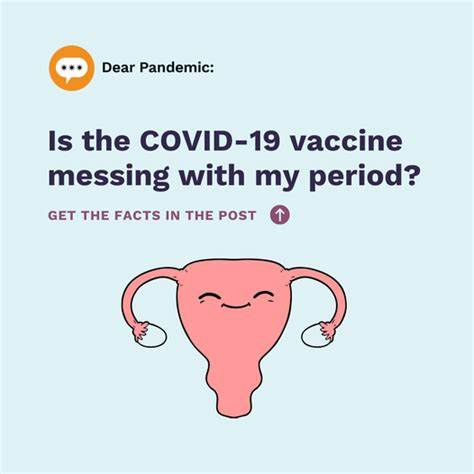July 15, 2022
In a recent article in Science Advances , Lee et al discuss the changes in menstrual bleeding after Sars-CoV-2 vaccination that women in different groups of oral contraceptive use, hormones, or post-menopausal for a large part reported breakthrough bleeding. Initially in the pandemic, the media and even doctors were dismissive of these women’s claims that vaccination had any effect on menstrual bleeding. However, researchers started like the authors started taking an interest in this research.
The patients were recruited through a survey propagated through many vehicles of social media so though they used many avenues to recruit people, there may be response bias and certainly confounding. The methods they used were multivariate logistic regression for the main analysis of heavy menstrual bleeding. Afterward they did restrict the sample size down to persons who had two doses of vaccine or one dose of Johnson & Johnson amongst some other restrictions. Thus in this article they did a retrospective observational study of vaccinated women instead of doing a prospective study with 35,572 women.
In terms of their results from this sample, they found that 42% of people with regular menstrual cycles bled more heavily than usual, while 44% reported no change after being vaccinated. Among those survey respondents who typically do not menstruate, 71% of people on long-acting reversible contraceptives, 39% of people on gender-affirming hormones, and 66% of postmenopausal people reported breakthrough bleeding. To summarize their results, they found that increased/breakthrough bleeding was significantly associated with age, systemic vaccine side effects (fever and/or fatigue), history of pregnancy or birth, and ethnicity.
We can assume they came to this conclusion from their longitudinal models. The reporting from the logistic regression models, however, is a little convoluted and not clear how they can make conclusions from the way they setup the model and interpreted the results. I believe the authors could have done a better job with the analyses and modeling as I don’t think it accurately represents their interpretations.
The authors state that their goal was to characterize the experiences of a wide range of people, and they also acknowledge the limitation of significance testing and mainly focusing their results on effect size estimates and odds ratios. They then state that though they reported and incorporated p-values in they analyses that they used them in combination with effect size estimates and confidence intervals when discussing results. Finally, they also state that their analyses should be considered exploratory and descriptive to aid future hypothesis development to examine menstrual changes experienced following vaccination.
Written by,
Usha Govindarajulu
Keywords: COVID-19, vaccination, menstrual bleeding
References
Lee KMN, Junkins EL, Luo C, Fatima, UA, Cox ML, and Clancy KBH (2022) “Investigating trends in those who experience menstrual bleeding changes after SARS-CoV-2-vaccination” ScienceAdvances. 8(28): DOI: 10.1126/sciadv.abm7201.. https://www.science.org/doi/10.1126/sciadv.abm7201
https://tse3.mm.bing.net/th?id=OIP.B_A8qEvl4Ek5UPSohKjUmgHaHa&pid=Api&P=0
